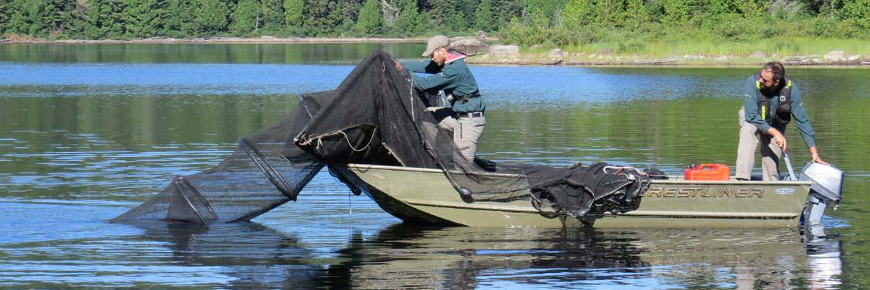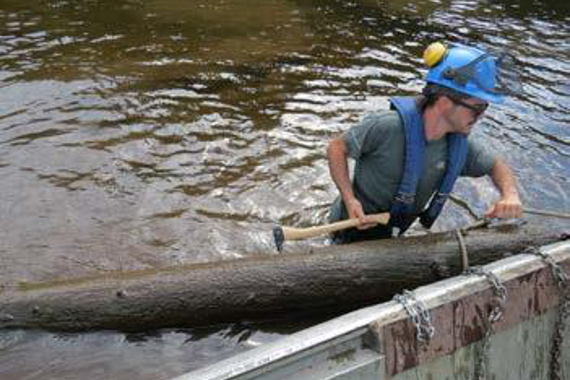
Parks Canada staff use an Alaskan trap net to capture and preserve native brook trout.
Rejuvenating aquatic ecosystems
Restoring the lakes of La Mauricie National Park
What’s the issue?

From the mid-1800s to about 1970, woodlands in and around what is now La Mauricie National Park were heavily logged – an activity that affected more than just the forests. The lakes and rivers used to transport timber were also profoundly changed, and traces of this era are still visible in the form of old dams, high water levels, sunken logs and a general decline in the health of aquatic ecosystems. Native brook trout were a casualty of these changes – its habitats degraded, its populations contracted, its genetic integrity diluted. Past actions also led to invasions by 20 nonnative fish species, further endangering freshwater communities. Since 2004, staff at La Mauricie have been working to improve natural conditions of the park’s lakes and streams and actively restoring the iconic brook trout populations.
What’s our approach?
- Maintain genetic diversity of brook trout populations by capturing and breeding individuals in fish hatcheries, and releasing offspring to their native lakes.
- Eliminate invasive fish from lakes into which trout are to be reintroduced.
- Clear abundant log debris from shores and lake bottoms to improve habitat quality.
- Restore fish passage routes between water bodies by dismantling old dams.
- Engage Canadians and raise awareness among visitors about opportunities and methods to restore impaired aquatic ecosystems in La Mauricie.
What’s been accomplished?
- Captured and preserved genetically distinct populations of brook trout from five lakes and collaborated with fish hatcheries to rear and release 49,500 brook trout into nine lakes.
- Removed non-native fish from 12 lakes and cleared almost 98,000 logs from 18 lakes.
- Dismantled 18 old log dams to restore natural water levels and passage for fish.
- Connected with Canadians through social and national media (available in French only), regional and local publications, as well as at two major events in Montreal.
- Date modified :